A weekly pilgrimage to a traditional supermarket is history for more and more consumers - 19% more year on year in 2014, according to Him! - as they switch between laptop, mobile, tablet, supermarket, discounter and c-store to buy groceries.
So seamless is the shopping experience that, according to David Smith, head of digital at GS1 UK, the consumer is not making any differentiation between the channels. “We’re great at coming up with terminology but at the end of the day it’s about shopping.”
As Him! executive director Jill Livesey says: “The omnichannel shopper is now just ‘a shopper’.”
These new habits present a lucrative opportunity. According to Dunnhumby, an omnichannel shopper spends 30%-67% more cash per visit than the average shopper who wheels a squeaky trolley around a supermarket once a week.
But if the experience for the shopper is seamless, behind the scenes it’s a whole different matter. Keeping up with shoppers in 2015 - servicing a multitude of requirements and expectations - is neither easy nor cheap. So how well are retailers and suppliers adjusting? How can their online platforms complement this new shopping model? What role should mobiles play? How can physical stores adapt? And how can grocers make cash out of fulfilment?
There’s no doubt consumers share a particularly complex relationship with their food, Jon Rudoe, digital and technology director for Sainsbury’s, pointed out at the Internet Retailing Expo in March.
“You need to differentiate food from other industries, because food is a much more complex purchase,” he said. “Food is about trust and provenance so the changes in our industry are a lot more complicated, and the technology behind it is a lot more complicated too.”
So while digitisation has dismantled the high street presence of music and film - where 80% of purchases now take place online, according to analytics firm Intelligent Positioning - the majority of consumers continue to buy food from a store. Just 20% of shoppers carry out the majority of their grocery shop online, according to Mintel, while £9 out of every £10 spent with Sainsbury’s is still spent in its stores, adds Rudoe.
The true value of online is considerably higher however. Research by Deloitte shows 35% of in-store food and drinks sales are now driven by digital technology of some kind or other, equivalent to almost £100bn worth of sales in 2014.
“Consumer purchasing behaviour is what we call web to store, which means most of the purchases still end in the store but they start online,” says Bruno Berthezene, UK country manager at digital communications specialists Solocal Group.
Online platforms must therefore provide “quick access to practical information” to answer questions consumers have, he adds, from basics such as range and opening hours, to details on provenance, nutritional content and full ingredients, much of which is being incrementally required by EU Regulation 1169. And grocery websites for the most part are getting these basics right. Click on any product on the Waitrose website, for example, and mandatory allergy advice and nutritional information will sit beside cooking instructions, and even star rated reviews.
Mobile missions
The challenge now, according to Mark O’Hanlon, senior manager at management consultants Kurt Salmon, is to enthuse consumers online with more focus on mission-based shopping.
It’s an area the major multiples have so far ventured into at varying degrees. Elementary missions for ‘Cooking with Kids’ and ‘Cooking on a Budget’ appear on the Tesco homepage. Asda has taken its offering a step further with individually branded landing pages for BBQ, Ramadan, and Father’s Day.
However, a report released this week by Savvy Insight proves they need to do more, with a mere 11% of shoppers currently accessing this content. Shoppers complained it was often irrelevant and even finding something new for an evening meal presented a struggle. Content therefore needs to be more tailored to their individual needs, profile and purchasing habits, these shoppers concluded. Julian Highley, global director of customer knowledge at Dunnhumby, agrees. “There is the potential to create a far more tailored experience either to an individual, or to certain groups,” he says. “There’s a lot more that could be done around personalising the entire online experience, and creating more mission-based stores within a store, within the screen real estate.”
Another challenge in terms of web-to-store purchasing behaviour is that much of this pre-purchase research no longer takes place on a desktop, or even a laptop. Mobile affected 17% of in-store sales in 2014, or £50bn, according to Deloitte, up 250% on 2012.
With mobile, Rudoe points out, the fact the technology is in the hands of your customers as they enter the store “helps create differentiation”.
And that differentiation can mean more than simply providing Wi-Fi in stores. “When people used desktop computers to plan shops, they didn’t have a way to take that information into stores easily,” says Nick Holzherr, CEO of Whisk.com, the digital shopping list app.
“Now that a lot of that planning is happening on mobile phones, those phones go into store with them. I don’t think any retailers have yet capitalised fully on the digital opportunities mobile presents.”
Mobile apps launched by the major multiples thus far have been more an extension of e-commerce than complementary to the in-store experience, featuring price comparison calculators, current deals, and the ability to add items to digital shopping lists.
And trials of Apple’s iBeacon technology - which allows retailers to transmit notifications using Bluetooth to customers with iPhones hovering nearby - by the likes of Tesco and Waitrose were handled carefully for fear of putting shoppers off. In Tesco’s Chelmsford store messages were sent to customers when they arrived in-store to pick up pre-ordered goods, but it stopped short of targeted offers, or other messages.
Holzherr feels they missed a trick. “To capitalise on opportunities, app developers must provide real value to shoppers in the process of their grocery trips,” he says. “If they do so, mobile apps can become a hyper-targeted communication channel to talk to shoppers.”
And the figures back him up, with 59% of digital shoppers keen to see more highly targeted product suggestions, according to Savvy Insight, and 61% open to the idea of grocery coupons delivered direct to their smartphones.
The question is: how? To build up the clearest picture of their consumer, Matthieu Chouard, general manager for EMEA at omnichannel personalisation specialists Rich Relevance, believes retailers must merge data historically siloed across a number of channels.
To fully embrace the cross-channel purchasing journey the consumer is on, grocers must also begin to revaluate and reimagine their physical estates.
Waitrose MD Mark Price believes revaluation will mean more than store closures and postponed developments as retailers retreat from the Space Race. The future is about “how people reimagine their space”.That means considering “to what extent you still need the same amount of physical space, the extent to which you can make the space you’ve got experiential, and the way to make it work harder.”
Blending space
Claire Zuurbier, head of digital store development at M&S, believes the future is a “blended space”, in which the physical and virtual are integrated to create an entirely new experience.
She suggests this concept will open up “a new shopping frontier”, which has the potential to be “all-pervading”. Experiential examples have thus far been limited to the premium end of non-food. German fashion designer Karl Lagerfeld, for example, has installed iPads in his stores to act as web portals to view collections, watch videos, and take pictures of items.
British brand Burberry also created ‘breakout’ sofa areas in its flagship London store in 2012, furnished with tablets to replace cash registers and queues.
There are signs, however, that the approach is trickling down to the high street.
When M&S re-entered the Dutch market after a 10-year absence in 2013, it put its ‘bricks and clicks’ strategy into practice at its multichannel store on the Kalverstraat in Amsterdam. Clothes rails were fed directly into digital screens, which then allowed shoppers to browse more clothes on a virtual rail. “You could tap further in to get a better look, look at the price and the washing directions, and then put it on your virtual arm, or put it back on the rail,” says Zuurbier.
Might this ever be applicable to high street grocery stores? Katie Baron, head of retail at Stylus, sees no reason why not. “While part of grocery shopping is extremely practical and routine-based, another part is extremely emotive and highly sensorial, which leaves an enormous amount of scope regarding the physical experience,” she says.
One example is the continued success of Tesco’s South Korean arm Homeplus, which opened its first wholly virtual store in a Seoul subway station four years ago. The discount chain plastered images of life-size store shelves filled with consumer goods in the store, each appearing alongside a barcode that shoppers could scan to order the item. The concept has since been extended to more than 20 bus stops in the Asian country.
The other key battleground for retailers is fulfilment, according to Jason Shorrock, retail strategy director at supply chain solutions provider JDA. “Today’s retail supply chain is nothing like the simple networks of 10 years ago,” he says.
“Consumers now want anywhere, any time fulfilment that is fast, convenient and reliable. No longer do they expect to wait hours at home for deliveries or days before collecting goods in stores.”
It’s a challenge never more evident than in the chaotic aftermath of Black Friday, in which unanticipated demand across all channels, both online and offline, left retailers such as M&S and Tesco struggling to fulfil their promises of next-day home deliveries.
The logistical challenge pales in comparison to the financial one, however. According to a report published in April from PwC, on behalf of JDA Software, more than 84% of the top 250 retailers and consumer goods firms said they were unable to fulfil omnichannel demand profitably.
Click & collect
So what’s the answer? Smith argues that competing on equal terms with pure e-commerce retailers such as Amazon will end in failure. And that the way forward is to make full use of an existing physical network of stores via click & collect services.
“The more people shopping online and then using their own cars come to pick up their products at the store, the better,” he says.
This idea is certainly gaining more traction with consumers, with Tesco reporting that more than 70% of general merchandise online orders have been collected during key trading periods, Asda opening more than 600 click & collect locations by the end of 2014, and Ocado unveiling its first click & collect site in late 2014.
Even Waitrose - whose click & collect strategy in conjunction with John Lewis is widely regarded as the most seamless and successful - is looking beyond its own estate to fulfil orders, trialling automated temperature-controlled lockers for third-party sites in late 2014
It won’t mark a comprehensive solution while staff are still tasked with manually compiling online orders for collection, however. “If you try to do that for a customer, there is a huge cost, and yet you’re charging the same prices, so it has to be less profitable,” says Price.
“Unless you can win customers from your competitor and get a marginal contribution, or persuade your customers to spend more than they otherwise would, you’ve got to say to customers ‘You have to pay for this service’. Or you can’t make money.”
O’Hanlon suggests the alternative would be to streamline operations toward the “fundamentally more effective” network of dark stores and to cut down on staff roaming supermarket aisles with a basket.
Shorrock agrees these dark stores should play an important role. “Ultimately, omnichannel consumers have thrown down the gauntlet to supply chain professionals to reinvent the supply chain in a much more agile and responsive capacity. And that journey will be difficult and require a much more sophisticated and complex operation,” he adds.
The online shopper in 2015
39% of shoppers venture online at least once every three months
74% cite convenience as the main reason for going online, 19% citing budgeting and 3% larger ranges
Two thirds of online shops are conducted while sitting in their living room, and 23% often do so while watching TV
More than half top up their online basket over multiple sessions
Inspiration comes from far more than just a supermarket website. 70% of shoppers will delve into recipe books; 44% find themselves inspired by food blogs, 34% take tips from Facebook, and 67% listen to friend’s recommendations for meals
61% want an app that allows you to receive coupons directly to your smartphone; 59% want highly targeted suggestions of products you might like; 56 want an app replacing all the loyalty cards in your wallet; and 51% the ability to add the ingredients of a recipe to an online shopping basket from any recipe site
Data from Savvy Insight, May 2015
Creepy or cool?
“How helpful would it be if you were looking at a skirt on the internet the previous night, then when you walked past the store you get a message on your phone saying the skirt you were looking at is actually on offer, in your size? ” Claire Zuurbier, head of development for digital stores at M&S told the IRX conference.
The means to deliver this highly tailored experience already exists, in large part thanks to the increasing use of beacon technology.
Retailers including Walmart, Urban Outfitters, and Sephora now all offer the opportunity to receive targeted messages via smartphone.
Yet this level of personalisation on the move adopts web-based techniques that already leave some uncomfortable. How can retailers strike the right balance therefore between knowing their customer, and downright creepy?
In attempting to delve into this challenge omnichannel experts Rich Relevance discovered personalisation can go too far.
Their research showed that interactive store maps and promotions triggered by location were acceptable, but dressing rooms with digital screens, facial recognition devices, and salespeople greeting customers by name were creepy.
The most popular innovation was the opportunity to scan a product with your mobile to learn of associated recommendations - cool to 76% of those surveyed.



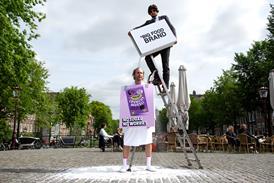

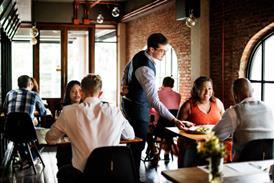

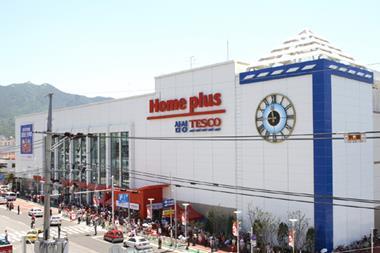


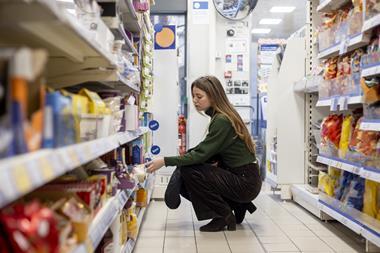
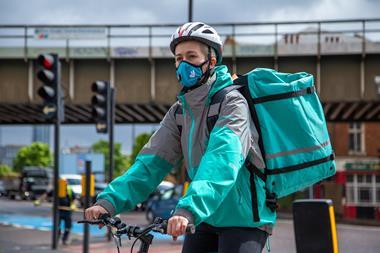

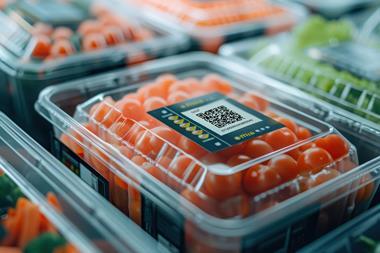

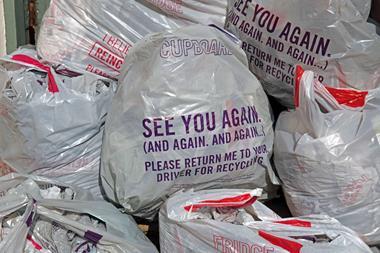
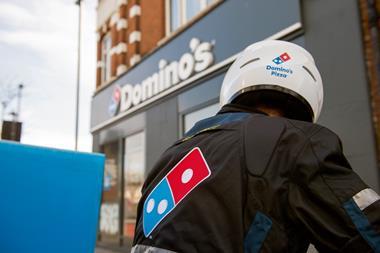


No comments yet